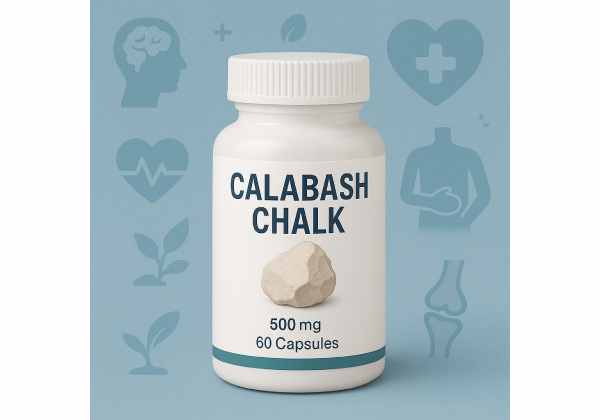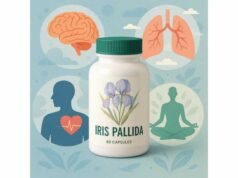
Calabash chalk, a distinctive earthy substance found mainly in West Africa, holds deep cultural roots and a complex health profile. Traditionally consumed by pregnant women and children for its unique taste and perceived medicinal value, this naturally occurring clay—also known as “nzu,” “la craie,” or “calabar stone”—has become the subject of worldwide curiosity and controversy. While calabash chalk is often used for relief from morning sickness, indigestion, and as a remedy for various ailments, concerns over its safety and mineral content persist. This comprehensive guide examines calabash chalk’s origins, composition, traditional and modern uses, scientific findings, and the crucial health risks and best practices for anyone considering its use.
Key Takeaways
- Calabash chalk is a naturally occurring clay or geophagic substance widely consumed in West Africa, especially by pregnant women for nausea relief.
- It is traditionally believed to ease morning sickness, stomach upsets, and serve as a source of minerals, but its true benefits remain debated.
- Scientific studies highlight serious risks—especially due to possible contamination with lead, arsenic, or other heavy metals.
- Calabash chalk is not recommended for regular consumption due to toxicity concerns and may harm fetal and childhood development.
- Medical professionals advise seeking safer alternatives for nausea and mineral supplementation.
Table of Contents
- Calabash Chalk Origins, Traditional Uses, and Cultural Significance
- Chemical Composition and Biological Effects of Calabash Chalk
- Potential Benefits and Common Uses of Calabash Chalk
- Health Risks, Toxicity, and Interactions of Calabash Chalk
- Recommended Dosage, Safe Usage, and Alternatives to Calabash Chalk
- Frequently Asked Questions About Calabash Chalk
Calabash Chalk Origins, Traditional Uses, and Cultural Significance
Calabash chalk, sometimes referred to as “nzu,” is a unique geophagic clay consumed primarily in Nigeria, Ghana, Cameroon, and other West African nations. Its distinct taste, texture, and cultural associations have ensured its continued presence in daily life and ritual for generations.
What Is Calabash Chalk?
- Natural Occurrence: Calabash chalk is formed from natural clay and soil, often shaped into irregular lumps or balls, and sometimes baked or processed for consumption. Its colors range from pale beige to gray, with a chalky texture that crumbles easily.
- Other Names: Besides “nzu,” it’s called “ndom” (Ghana), “epo” (Nigeria), “calabar stone,” “argile,” or “eating chalk” in various communities.
Historical and Cultural Importance
- Pregnancy and Childhood: Traditionally, calabash chalk is favored by pregnant women, especially during the first trimester, for its supposed ability to relieve nausea and cravings. Children sometimes eat it for stomach upsets or as a “treat.”
- Ritual and Social Uses: In some regions, calabash chalk is part of initiation rites, gift exchanges, or religious ceremonies, symbolizing purity, health, or status.
- Geophagy Tradition: The deliberate eating of earth or clay—called geophagy—is a widespread cultural practice across Africa, Asia, and other continents, often connected to perceived health benefits or cravings during pregnancy.
Preparation and Consumption
- Calabash chalk is usually sold in markets as dried lumps, sometimes with a smoky or roasted aroma. It is typically chewed or dissolved in water and swallowed.
- No standard dose exists; amounts consumed vary widely depending on personal preference and availability.
Cultural Perceptions and Stigma
- Among many, consuming calabash chalk is seen as a harmless tradition. Others consider it an unhealthy craving or habit, especially when associated with pregnancy.
- Increased migration has brought calabash chalk into global markets, where its safety and legality are sometimes questioned.
Summary
Calabash chalk’s appeal lies not just in its texture or flavor, but in its powerful cultural resonance. Yet, as its use becomes more widespread and scrutinized, questions about its health impact become more urgent than ever.
Chemical Composition and Biological Effects of Calabash Chalk
To understand calabash chalk’s potential benefits and dangers, it’s crucial to examine its chemical makeup and how these components interact with the body. While users often cite “mineral content” as a reason for consumption, scientific analysis paints a more nuanced—and sometimes alarming—picture.
What’s in Calabash Chalk?
- Major Components: Primarily composed of kaolin (a soft clay mineral), quartz, feldspar, mica, and other silicates.
- Trace Elements: May contain calcium, magnesium, iron, potassium, sodium, and trace amounts of other minerals.
- Potential Contaminants: Studies consistently reveal variable amounts of lead, arsenic, mercury, cadmium, and other heavy metals—sometimes far above safe limits for human consumption.
- Organic Compounds: The soil may harbor plant residues, bacteria, or fungi, depending on harvesting and processing methods.
Biological Effects and Digestion
- Mineral Supplementation: Some users believe calabash chalk provides essential minerals, but its bioavailability (how well the body absorbs them) is very low.
- Adsorption of Toxins: The clay may bind to toxins or bacteria in the gut, providing some relief from diarrhea or poisoning—similar to medical-grade clays (bentonite).
- Digestive Impact: Consumption may interfere with absorption of nutrients, bind to beneficial dietary minerals, and slow gastrointestinal transit.
- Lead and Heavy Metal Toxicity: Repeated ingestion can cause heavy metal poisoning, especially in children or pregnant women, leading to cognitive delays, anemia, and organ damage.
Scientific Findings
- Multiple studies confirm that, unlike purified medicinal clays, calabash chalk often contains dangerously high levels of lead and other toxins.
- The body absorbs very little of the “good” minerals from calabash chalk, but absorbs toxic elements over time.
Summary
While calabash chalk’s composition can vary, most samples present a higher risk of toxicity than nutritional benefit. Understanding what’s really in calabash chalk is the first step in making informed choices about its use.
Potential Benefits and Common Uses of Calabash Chalk
Despite health warnings, calabash chalk remains popular in certain communities, largely due to traditional beliefs, anecdotal benefits, and deeply rooted practices. Here’s a balanced look at why people use calabash chalk—and what the science actually says.
1. Relief from Morning Sickness and Nausea
- Traditional Belief: Pregnant women report that calabash chalk eases nausea, reduces vomiting, and “settles” the stomach during early pregnancy.
- Scientific View: Placebo effect and oral fixation may play a role; there is no solid evidence that calabash chalk chemically reduces nausea. Ingesting clay can actually worsen nutrient deficiencies.
2. Management of Digestive Issues
- Folk Remedy: Used for treating heartburn, indigestion, or mild diarrhea.
- Mechanism: Its absorptive qualities may help bind irritants in the gut, but also bind nutrients and medications, reducing their effectiveness.
3. Satisfying Non-Food Cravings (Pica)
- What Is Pica?: Pica is the craving and consumption of non-nutritive substances (such as clay, chalk, or soil), often observed in pregnant women or people with mineral deficiencies.
- Why It Happens: Reasons are unclear—may relate to iron deficiency, cultural practices, or stress.
4. Perceived Mineral Supplementation
- Myth: Some believe calabash chalk is a valuable source of calcium, magnesium, or iron.
- Reality: The minerals are largely insoluble and poorly absorbed, and any small nutritional gain is offset by the risk of toxic exposure.
5. Social and Ritual Significance
- Chewing or sharing calabash chalk is part of some traditional rituals, marking milestones or transitions.
- Its consumption may offer comfort, stress relief, or a sense of cultural identity.
Summary
While calabash chalk’s perceived benefits are real for many users, scientific evidence shows its risks greatly outweigh its advantages—especially in the context of pregnancy, childhood, or repeated use.
Health Risks, Toxicity, and Interactions of Calabash Chalk
Calabash chalk, while deeply embedded in tradition, carries significant health risks that cannot be ignored. Understanding these dangers is crucial for anyone considering its use, especially vulnerable groups like pregnant women, children, or those with existing health conditions.
Heavy Metal Contamination: The Core Danger
- Lead Poisoning: Numerous studies have found alarmingly high levels of lead in many samples of calabash chalk—sometimes up to 40 times higher than international safety standards. Chronic lead exposure can cause irreversible brain damage, behavioral disorders, lowered IQ, anemia, and kidney damage, especially in children and fetuses.
- Other Toxic Elements: Arsenic, mercury, and cadmium are also commonly detected, each carrying severe risks to the nervous, immune, and cardiovascular systems.
- Cumulative Toxicity: Because the body stores heavy metals, even occasional use can add up over time, especially when consumption is frequent or long-term.
Digestive and Nutritional Hazards
- Impaired Nutrient Absorption: Calabash chalk can bind to dietary minerals like iron, zinc, and calcium, making them unavailable for absorption. This can worsen existing deficiencies and is particularly dangerous for pregnant women and growing children.
- Gastrointestinal Blockages: In rare cases, excessive clay ingestion has caused bezoars (solid masses in the gut) or blockages, requiring medical intervention.
- Constipation or Diarrhea: While some users seek it for digestive relief, others experience worsening constipation or unpredictable bowel movements.
Risks to Pregnant Women and Developing Fetuses
- Neurodevelopmental Harm: Lead and other toxins cross the placenta, increasing the risk of miscarriage, premature birth, low birth weight, and lifelong neurodevelopmental delays in children.
- Anemia: Binding of iron in the gut and lead-induced suppression of red blood cell production can both cause or worsen anemia, increasing risks for both mother and baby.
- No Safe Threshold: Because even low-level exposure is harmful to developing brains, major health organizations warn against any use during pregnancy.
Interactions with Medications and Supplements
- Reduced Efficacy: The absorptive nature of calabash chalk can decrease absorption of oral medications, vitamins, and essential minerals, undermining medical treatment or supplementation.
- Potential for Toxic Drug Levels: Rarely, by binding to or interacting with drugs, it may unpredictably alter how much medication gets absorbed, risking either treatment failure or toxicity.
Addiction and Behavioral Concerns
- Pica and Habit Formation: Some users develop compulsive cravings for calabash chalk, making cessation difficult even in the face of health problems—a pattern similar to pica and seen globally among those with mineral deficiencies or underlying psychological stress.
- Social and Mental Health Impact: When use is stigmatized or hidden, anxiety, guilt, or secrecy can develop, complicating both physical and mental health outcomes.
Reported Cases and Medical Emergencies
- Poisoning Incidents: There are documented cases of acute lead poisoning and serious illness in both children and adults following consumption of calabash chalk.
- Symptoms of Toxicity: Early signs include abdominal pain, vomiting, lethargy, irritability, and constipation. Long-term symptoms can be subtle—learning difficulties, behavioral changes, growth delays, and fatigue.
Regulatory Status and Warnings
- Bans and Advisories: Many countries (including the UK and US) have issued public health warnings or outright bans on the sale of calabash chalk due to its toxicity.
- No Quality Control: Because calabash chalk is a natural, unregulated product, its composition can vary widely—even within the same batch or region—making risk unpredictable.
Summary
While calabash chalk’s cultural and ritual value is recognized, its health risks—especially from heavy metal contamination—are clear, severe, and well-documented. The potential for poisoning, nutritional harm, and pregnancy complications makes avoidance the safest choice for most people, with medical professionals urging against its use.
Recommended Dosage, Safe Usage, and Alternatives to Calabash Chalk
Given the health hazards linked to calabash chalk, medical authorities do not recommend any dose as “safe,” especially for children and pregnant women. However, many individuals continue to seek out calabash chalk for cultural, sensory, or perceived health benefits. Here’s what you need to know about minimizing risk and exploring safer alternatives.
No Standard or Safe Dosage
- Lack of Regulation: There are no scientific guidelines or clinical trials establishing a safe intake for calabash chalk due to its unpredictable content and toxicity.
- Traditional Practices: Some communities consume small lumps or pieces daily, but this routine has led to documented cases of poisoning and nutritional deficiency.
- Medical Consensus: Health professionals advise complete avoidance, especially in vulnerable groups.
If Use Persists: Harm Reduction Tips
- Seek Medical-Grade Alternatives: If you crave the texture or taste of clay, consider pharmaceutical-grade kaolin or bentonite, which are purified and tested for contaminants. Always consult a doctor before use.
- Limit Frequency and Amount: Reducing how often and how much you consume can lower, but not eliminate, health risks.
- Never Use During Pregnancy or Childhood: The risks of heavy metal toxicity are too great for developing brains and bodies.
- Consult a Healthcare Provider: If you have cravings for non-food substances, discuss this with a medical professional, as it may signal nutritional deficiencies (such as iron-deficiency anemia) or underlying health concerns.
Safer Alternatives for Nausea, Heartburn, and Mineral Support
- Morning Sickness: Use physician-approved remedies for pregnancy-related nausea (e.g., ginger, vitamin B6, or acupressure).
- Indigestion: Over-the-counter antacids, dietary changes, or medical advice offer safer relief.
- Mineral Deficiencies: Address cravings with lab testing and physician-guided supplementation using proven, bioavailable products.
Addressing Pica and Underlying Causes
- Nutritional Screening: Cravings for calabash chalk may reflect unmet mineral needs or dietary gaps; testing can reveal and address deficiencies.
- Counseling and Support: Psychological stress or habit formation can be managed with counseling, peer support, and behavioral strategies.
Guidance for Immigrants and Diaspora Communities
- Cultural Adaptation: Migrants may continue the practice in new countries, sometimes without access to information about health risks. Community education and culturally sensitive care are key.
- Legal Restrictions: Be aware of local bans or advisories regarding calabash chalk sales.
Summary
There is no recommended or truly safe way to use calabash chalk due to its high risk profile. If cravings persist, seek medical advice and consider purified alternatives or other evidence-based strategies to support health.
Frequently Asked Questions About Calabash Chalk
What is calabash chalk, and why do people eat it?
Calabash chalk is a naturally occurring clay consumed in parts of West Africa, often by pregnant women or children, for nausea relief, cultural reasons, or to satisfy cravings for earth-like textures and flavors.
Is calabash chalk safe to eat during pregnancy?
No. Calabash chalk often contains high levels of lead and other toxins that can harm fetal development, increase miscarriage risk, and cause lifelong learning or growth problems in children.
What are the health risks of eating calabash chalk?
Major risks include lead and heavy metal poisoning, anemia, digestive issues, and impaired absorption of essential nutrients. Long-term use can cause serious, irreversible health damage, especially in children.
Can calabash chalk treat morning sickness or mineral deficiency?
There is no scientific evidence that calabash chalk effectively treats nausea or supplies minerals in a safe, absorbable form. Safer, medically proven remedies are available for both conditions.
Are there any safe alternatives to calabash chalk?
Yes. If you crave earth or clay, purified pharmaceutical kaolin or bentonite may be safer. For nausea or mineral deficiency, consult a healthcare professional for evidence-based options.
Why do people crave calabash chalk or similar substances?
Cravings for non-food items (pica) may result from iron deficiency, pregnancy, stress, or cultural practices. If you experience such cravings, seek a medical evaluation to address underlying causes.
Disclaimer:
This article is for educational and informational purposes only. Calabash chalk is not recommended for consumption. Always consult a healthcare provider before using any supplement or non-food substance, especially during pregnancy or for children.
If you found this information valuable, please share it on Facebook, X (formerly Twitter), or your preferred social network. Follow us for more evidence-based wellness resources—your support helps us continue our mission to deliver trustworthy health information!








